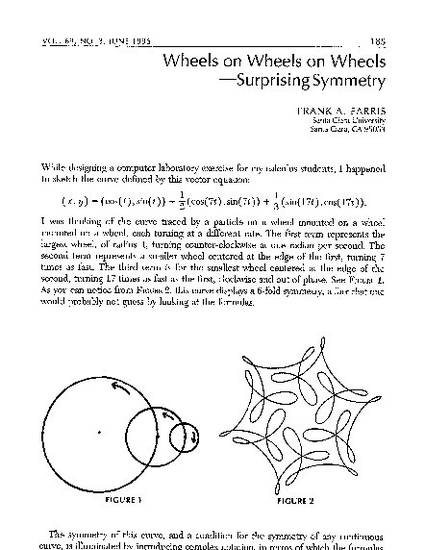
Article
Wheels on Wheels on Wheels-Surprising Symmetry
Mathematics and Computer Science
Document Type
Article
Publication Date
6-1-1996
Publisher
Mathematical Association of America (MAA)
Disciplines
Abstract
While designing a computer laboratory exercise for my calculus students, I happened to sketch the curve defined by this vector equation: (x, y) = (cos(t), sin(t)) + 1/2(cos(7t), sin(7t)) + 1/3(sin(17t), cos(17t)). I was thinking of the curve traced by a particle on a wheel mounted on a wheel mounted on a wheel, each turning at a different rate. The first term represents the largest wheel, of radius 1, turning counter-clockwise at one radian per second. The second term represents a smaller wheel centered at the edge of the first, turning 7 times as fast. The third term is for the smallest wheel centered at the edge of the second, turning 17 times as fast as the first, clockwise and out of phase.
Comments
Copyright 1996 Mathematical Association of America. All Rights Reserved.
Citation Information
FARRIS, Frank A. "Wheels on Wheels on Wheels-Surprising Symmetry."Mathematics Magazine 69, No. 3 (1996): 185-189.
